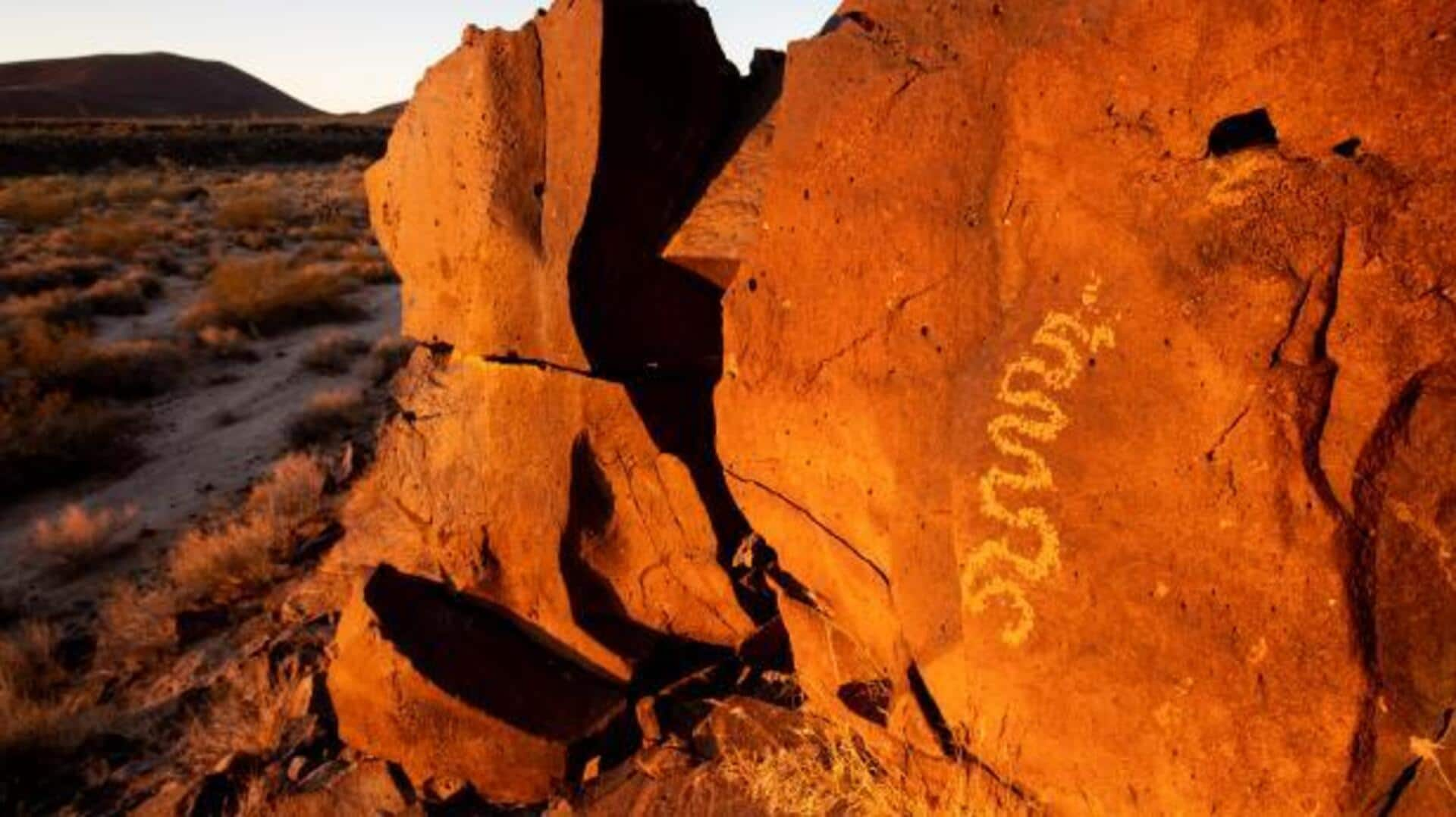
Why desert rock carvings are a must-see
What's the story
While exploring remote desert paths, it is possible to stumble upon ancient rock carvings, giving a peek into the lives of ancient civilizations. The carvings, engraved on the stone by ancient people, reveal a lot about their lives and religion. The trip through the secluded paths not just reveals beautiful art but also brings you closer to the past. Here's all about unearthing these beautiful relics in desert.
Ancient artifacts
Understanding rock carvings
Rock carvings, or petroglyphs, are ancient artifacts made by removing a part of a rock surface by incising or carving. The carvings typically depict animals, human figures, and abstract symbols. They act as historical records and provide clues about the culture and environment of early societies. Studying these carvings allows archaeologists to understand how ancient people communicated and interacted with their surroundings.
Exploration tips
Navigating desert pathways
Navigating desert pathways has to be done with preparation considering harsh conditions and remoteness. It is important to carry enough water supplies and wear protective clothing against sun exposure. A reliable map or GPS device is essential to find specific sites where rock carvings are located. Travelers must be aware of local wildlife and terrain challenges while exploring these isolated areas.
Protecting heritage
Preservation efforts
Preserving historic rock carvings is essential to uphold cultural heritage. Many sites are threatened by natural erosion or human activities like vandalism or development projects. Conservation efforts involve documenting existing carvings through photography or 3D scanning technology to create digital archives for future study. Public awareness campaigns seek to educate visitors on respecting these irreplaceable treasures.
Cultural insights
Engaging with local communities
Engaging with local communities can also add to the experience of exploring desert pathways with historic rock carvings. Locals often have valuable knowledge about the history and significance of these sites, which was passed down through generations. Collaborating with community members can provide deeper insights into cultural practices associated with the carvings, while fostering mutual respect between the visitors and residents.